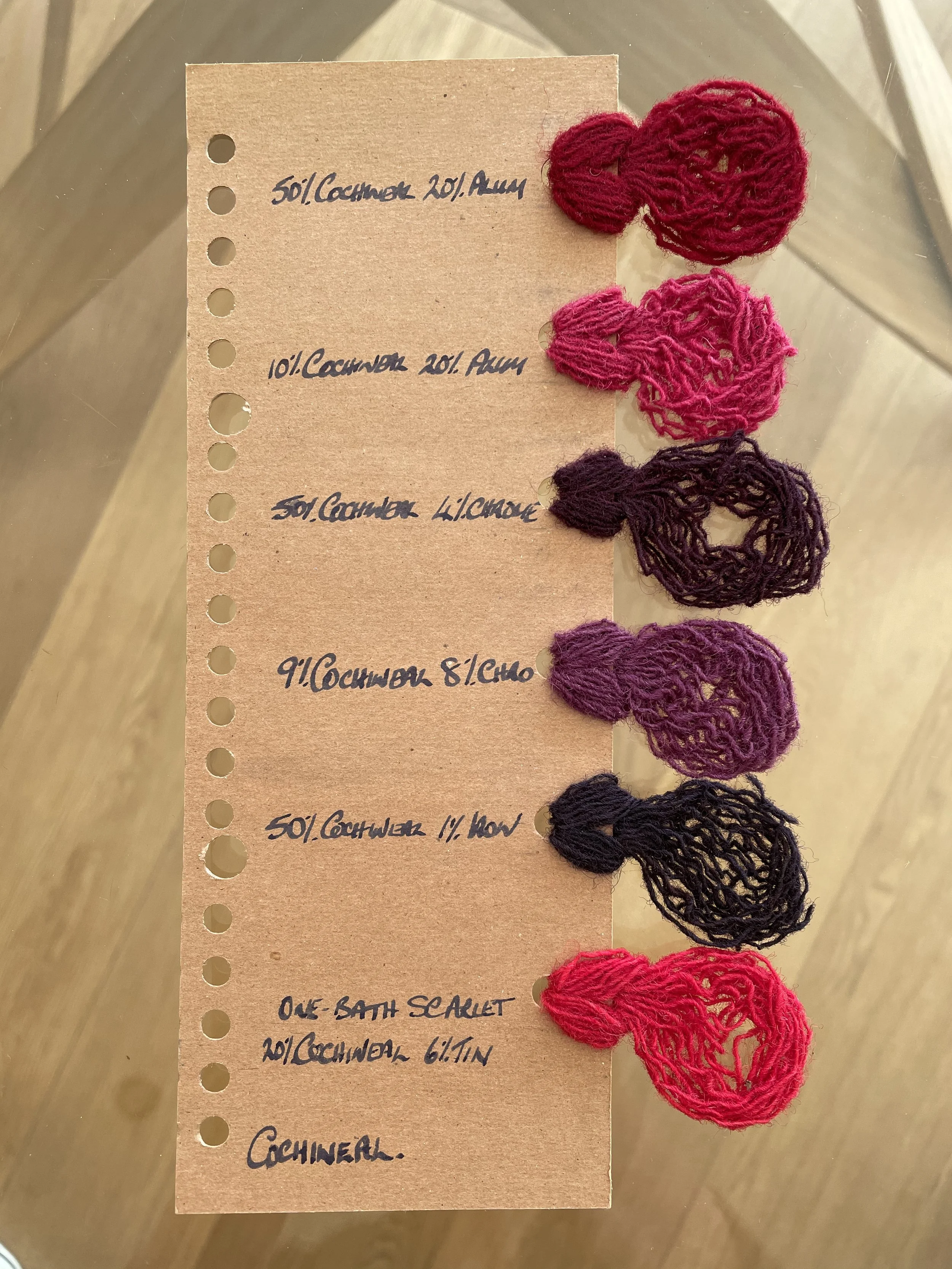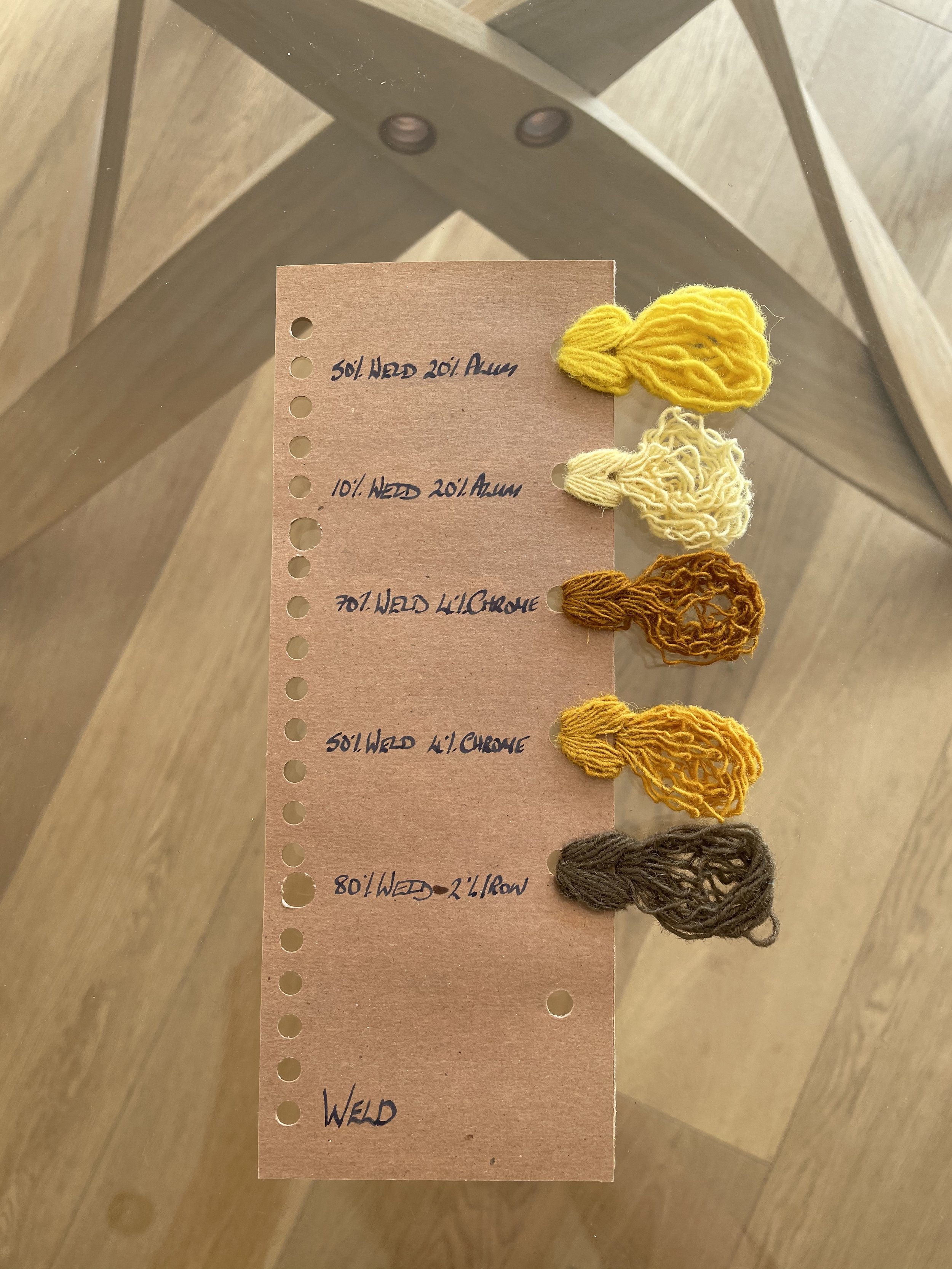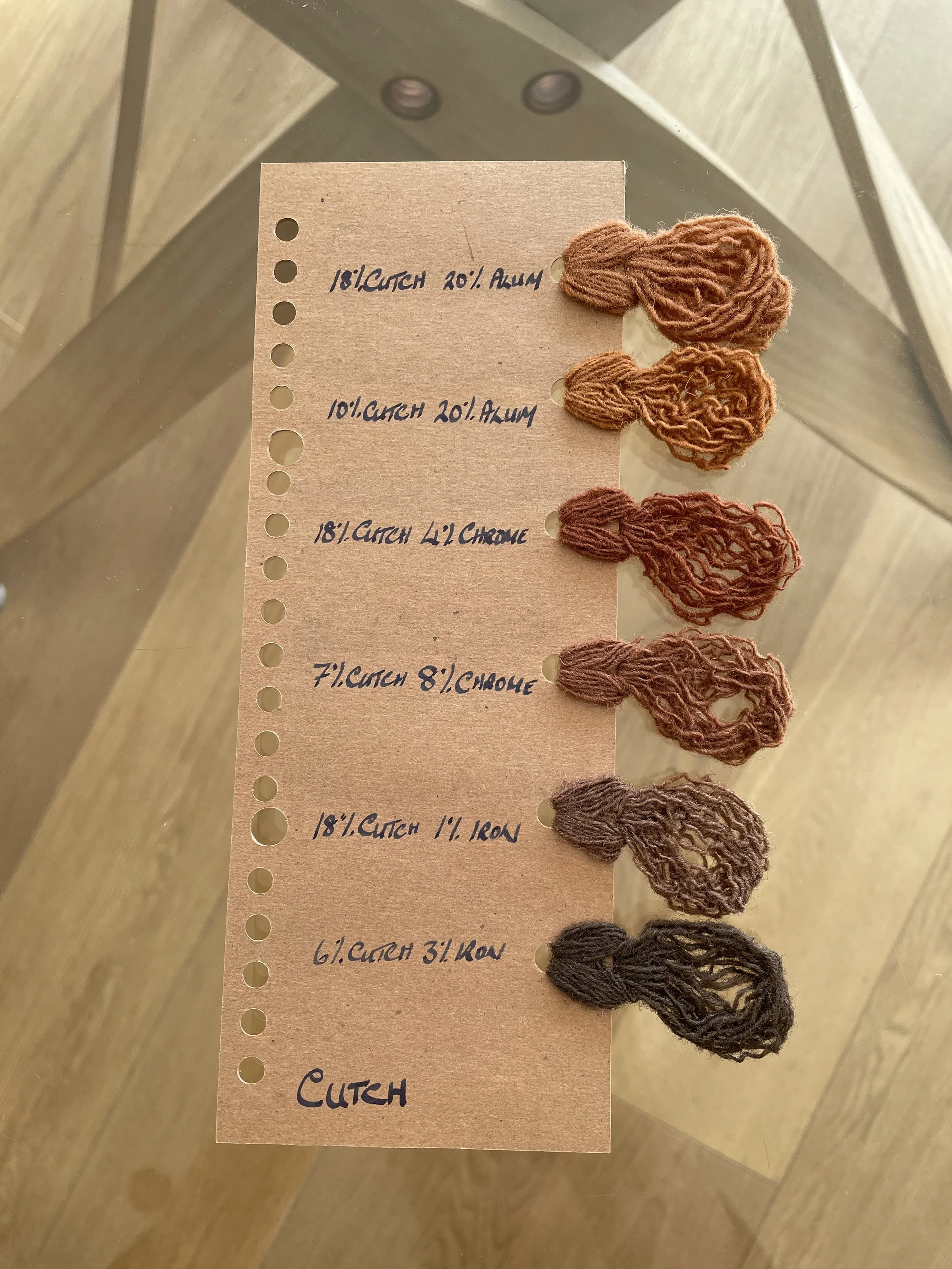Natural Dyeing
Dyeing with natural (vegetable) dyes has enjoyed a resurgence of late we compared colours and dyestuffs used to dye Kabylie yarns and naturally found many crossovers.
Photos - Diane Wood
Nora’s notes on Kabylie natural dyes.
Around Dyeing -
There is a strong taboo around dyeing, it was very secret and for this reason we don’t have much information on the processes.
A woman could dye wool but she had to follow a ritual as follows: at the beginning of the building of a new house you had to put in the foundations a warp thread and strands of dyed wool of different colours. Otherwise, there were specialists who would dye before or after the weaving - skeins of yarn and/or woven pieces were brought to the market and given to them.
Wool dyeing process :
Women boil water and add salt (and sometimes Alum) to fix the colour - they submerge the wool in the pot and wait until the water goes clear - at this stage the wool has absorbed all the colour. Also, salt refers to the sea as a symbol of creation (Birth).
Reddish Brown with Madder (garance)
Mustard yellow with Turmeric
Lemon Yellow with Saffron
Pistachio green with wild Mallow
Blue with indigo plant
Mauve with cactus flowers
Brown with pomegranate peel





